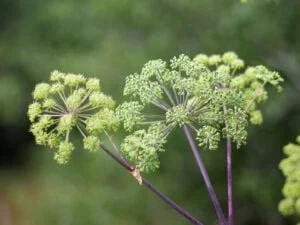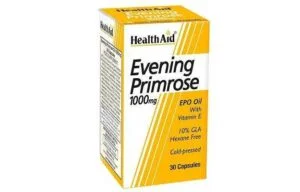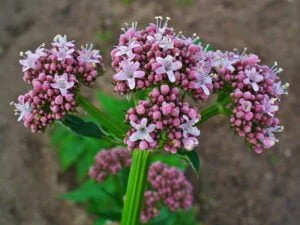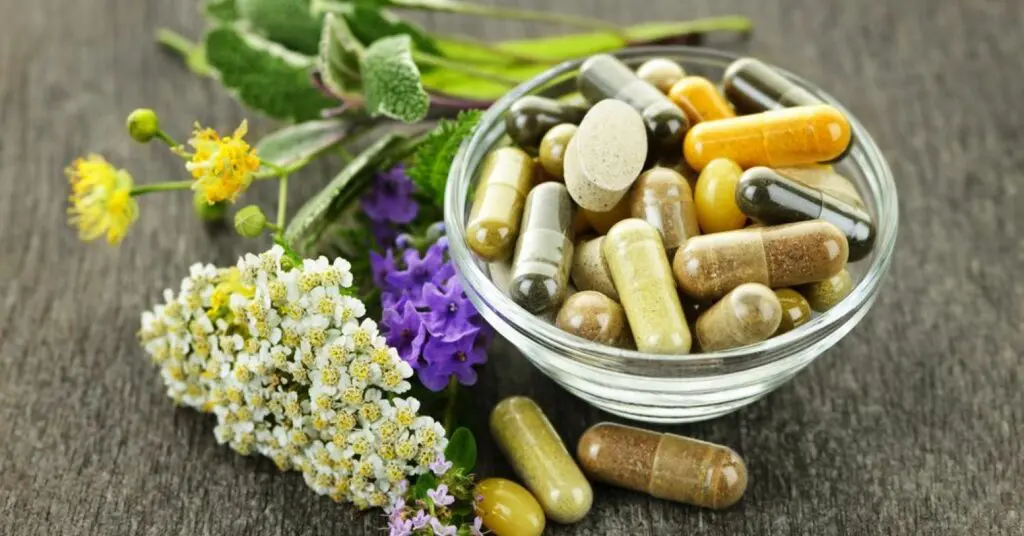In the quest for holistic health and well-rounded approaches to managing menopausal symptoms, many women are turning to the wisdom of natural medicine. From herbal remedies to lifestyle adjustments, the realm of natural medicine offers a diverse and often personalized toolkit for navigating the menopausal transition. In this blog, we will explore the fascinating world of natural medicine for menopause, delving into effective strategies and time-tested remedies that empower women to navigate this phase with grace and vitality.
Contents
What is Menopause?

Menopause is a natural biological process that marks the end of a woman’s reproductive years. It is a significant and normal part of aging, typically occurring in women between their late 40s and early 50s, although the age range can vary. Menopause is officially diagnosed when a woman has gone without a menstrual period for 12 consecutive months.
The process of menopause is primarily driven by changes in the hormonal balance within the body, particularly a decline in the production of estrogen and progesterone by the ovaries. These hormones play crucial roles in regulating the menstrual cycle and supporting fertility.
As menopause approaches, the ovaries gradually decrease their production of these hormones, leading to the cessation of ovulation and menstruation.
Different Natural Medicine for Menopause
Natural medicine for menopause encompasses a variety of approaches, ranging from herbal remedies to lifestyle changes. It’s important to note that while these options may provide relief for some women, individual responses can vary. It’s always advisable to consult with a healthcare professional before starting any new treatment.
Here are different natural medicine options for managing menopausal symptoms:
Black Cohosh (Cimicifuga Racemosa)
Black Cohosh, scientifically known as Cimicifuga racemosa, is a perennial plant native to North America. It has a long history of traditional use among indigenous communities for various medicinal purposes. In contemporary times, Black Cohosh has gained popularity, particularly among women seeking natural medicine for menopause.
Uses in Menopause: One of the primary uses of Black Cohosh is in addressing symptoms associated with menopause. Women experiencing hot flashes, night sweats, mood swings, and sleep disturbances have turned to Black Cohosh as a potential herbal remedy.
Key Compounds: The active compounds in Black Cohosh include triterpene glycosides and flavonoids. While the exact mechanisms are not fully understood, these compounds are believed to have an impact on hormonal regulation, particularly estrogen.
Dong Quai (Angelica Sinensis)

Dong Quai, scientifically known as Angelica sinensis, is a perennial plant native to China, Japan, and Korea. Also referred to as “female ginseng” due to its traditional use in women’s health, Dong Quai has been a staple in traditional Chinese medicine (TCM) for centuries.
Uses in Women’s Health: Dong Quai is widely recognized for its applications in women’s health, particularly in addressing various gynecological concerns. It is often recommended for conditions related to menstruation, fertility, and menopause.
Key Compounds: The plant contains compounds such as ferulic acid, ligustilide, and various polysaccharides. These compounds are believed to contribute to the herb’s pharmacological effects.
Red Clover (Trifolium Pratense)
Red Clover, scientifically known as Trifolium pratense, is a perennial herb native to Europe, Western Asia, and Northwest Africa. This herb has been valued for its various medicinal properties and is widely recognized for its potential benefits in women’s health, especially during the menopausal transition.
Key Compounds: The active compounds in Red Clover include isoflavones, specifically genistein, and daidzein, which belong to the phytoestrogen family. Phytoestrogens are plant-derived compounds that structurally resemble estrogen and may have estrogenic effects in the body.
Uses in Menopause: Red Clover has been traditionally used to address menopausal symptoms, including hot flashes, night sweats, and mood swings. The presence of isoflavones is believed to contribute to its potential hormonal balancing effects.
Maca
Maca, scientifically known as Lepidium meyenii, is a cruciferous vegetable native to the high altitudes of the Andes Mountains in Peru. Revered for centuries in Peruvian culture, Maca has gained global popularity as a “superfood” and is often consumed for its potential health benefits.
Key Compounds: Maca is rich in various nutrients, including vitamins (B, C, and E), minerals (calcium, potassium, zinc), and beneficial plant compounds. However, its potential health benefits are often attributed to its unique class of compounds called macamides and macaenes.
Uses and Potential Benefits:
- Energy and Stamina: Maca is commonly associated with enhanced energy levels and increased stamina. Many individuals, including athletes, consume Maca for its potential to improve physical performance.
- Hormonal Balance: Maca is often touted for its adaptogenic properties, which may contribute to hormonal balance. It is believed to influence the endocrine system, potentially supporting the balance of hormones, including those related to the menstrual cycle and menopause.
Evening Primrose Oil

Evening Primrose Oil (EPO) is derived from the seeds of the Evening Primrose plant (Oenothera biennis), native to North America but now found in many regions. This oil has gained popularity as a natural remedy due to its rich gamma-linolenic acid (GLA) content, an essential fatty acid.
Key Compounds: The key component in Evening Primrose Oil is gamma-linolenic acid (GLA), an omega-6 fatty acid. GLA is a precursor to prostaglandins, which are hormone-like substances that play a role in various bodily functions.
Uses and Potential Benefits:
- Skin Health: GLA in Evening Primrose Oil may contribute to maintaining healthy skin. Some individuals use it to alleviate skin conditions like eczema and dermatitis.
- Menstrual Health: Evening Primrose Oil is often utilized to address symptoms associated with the menstrual cycle, including breast pain (mastalgia) and premenstrual syndrome (PMS).
Soy
Soybeans (Glycine max) have been a staple in Asian diets for centuries, and soy products have gained popularity worldwide due to their nutritional content. Soy is rich in protein, fiber, vitamins, and minerals, but its unique feature is the presence of compounds called phytoestrogens, specifically isoflavones.
Key Compounds:
- Isoflavones: The primary phytoestrogens in soy, including genistein and daidzein, have chemical structures similar to estrogen. These compounds may interact with estrogen receptors in the body.
Uses and Potential Benefits:
- Hormonal Balance: The isoflavones in soy have estrogenic properties, and they are believed to exert mild estrogen-like effects in the body. This has led to the use of soy as a potential natural remedy for managing symptoms associated with hormonal imbalances, such as those during menopause.
- Menopausal Symptoms: Some women use soy products to alleviate menopausal symptoms, including hot flashes, night sweats, and mood swings. The estrogenic activity of isoflavones is thought to help mitigate these symptoms.
Flax Seeds
Flax seeds (Linum usitatissimum) have been celebrated for their nutritional richness and health benefits for centuries. These small, golden, or brown seeds are a powerhouse of essential nutrients and unique compounds that contribute to overall well-being.
Key Nutrients:
- Omega-3 Fatty Acids: Flax seeds are one of the richest plant sources of alpha-linolenic acid (ALA), a type of omega-3 fatty acid important for heart health and brain function.
- Dietary Fiber: Rich in both soluble and insoluble fiber, flax seeds support digestive health, help regulate blood sugar levels, and contribute to a feeling of fullness.
- Lignans: Flax seeds are abundant in lignans, which have antioxidant properties and may offer various health benefits, including potential hormone-balancing effects.
Valerian

Valerian (Valeriana officinalis) is a perennial herb native to Europe and Asia, known for its historical use in traditional medicine for its calming and sedative properties. The root of the valerian plant is the primary part used for medicinal purposes.
Key Compounds:
- Valerenic Acid: Believed to be the primary active compound in valerian responsible for its calming effects.
- Valerenic Acids: These compounds may interact with gamma-aminobutyric acid (GABA) receptors in the brain, contributing to valerian’s sedative effects.
Chasteberry
Chasteberry, also known as Vitex agnus-castus, is a flowering plant native to the Mediterranean region. For centuries, its fruits (berries) have been utilized in traditional medicine for their potential to support hormonal balance, particularly in women. Chasteberry is often referred to as “the woman’s herb” due to its historical use for women’s health.
Key Compounds:
- Diterpenes: Chasteberry contains a variety of bioactive compounds, including diterpenes, which are believed to contribute to its hormonal effects.
Health Benefits:
- Menstrual Cycle Regulation: Chasteberry is commonly used to help regulate the menstrual cycle. It may be beneficial for women experiencing irregular periods.
- Premenstrual Syndrome (PMS): Chasteberry is often recommended for managing symptoms of PMS, such as breast tenderness, mood swings, and headaches.
- Menopausal Symptoms: Some women use chasteberry to alleviate certain menopausal symptoms, including hot flashes and mood disturbances.
Benefits of Natural Medicine for Menopause
While individual responses may vary, several potential benefits of natural medicine for menopause include:
- Alleviation of Hot Flashes: Many natural remedies, such as black cohosh, soy isoflavones, and red clover, have been studied for their potential to reduce the frequency and intensity of hot flashes, a common symptom of menopause.
- Hormonal Balance: Some herbs and supplements, like dong quai and chaste tree berry (Vitex), are believed to help regulate hormonal balance, potentially easing symptoms like mood swings and irregular periods associated with menopause.
- Bone Health Support: Menopause is often accompanied by a decline in bone density. Calcium, vitamin D, and magnesium supplements, along with weight-bearing exercises, can contribute to maintaining bone health during and after menopause.
Conclusion
In conclusion, natural medicines offer a diverse range of potential benefits for managing menopausal symptoms. From alleviating hot flashes to supporting bone health and emotional well-being, these remedies provide alternative options for women navigating the challenges of menopause. However, individuals must approach natural medicines with informed caution, consulting healthcare professionals to ensure safety and efficacy.
If you are facing menopause related issues, menopause treatment at HerMantra can help. Book your free trial online menopause treatment session now.


